Themed collection 2021 EES Lectureship winner: Sam Stranks

Halide perovskites scintillators: unique promise and current limitations
The origins of the remarkable performance of halide perovskite scintillators are presented, along with solutions to the challenges facing the field, followed by a discussion of applications that will benefit from the unique properties of these materials.
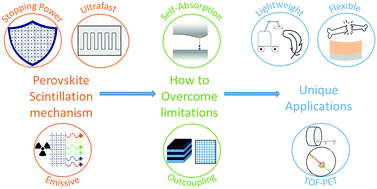
J. Mater. Chem. C, 2021,9, 11588-11604
https://doi.org/10.1039/D1TC01595H
Unraveling the varied nature and roles of defects in hybrid halide perovskites with time-resolved photoemission electron microscopy
Hybrid halide perovskites are found to contain multiple types of nanoscale defects that play varied roles in charge trapping – from highly detrimental to relatively benign.
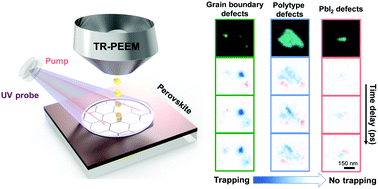
Energy Environ. Sci., 2021,14, 6320-6328
https://doi.org/10.1039/D1EE02055B
22.8%-Efficient single-crystal mixed-cation inverted perovskite solar cells with a near-optimal bandgap
A mixed-cation single-crystal lead-halide perovskite absorber layer was utilized to construct 22.8%-efficient solar cells with an expanded near infrared response that approaches the ideal bandgap range (1.1–1.4 eV) for single-junction solar cells.
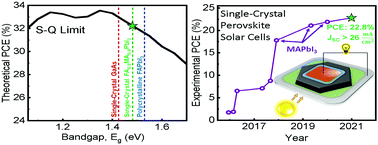
Energy Environ. Sci., 2021,14, 2263-2268
https://doi.org/10.1039/D0EE03839C
Lattice strain causes non-radiative losses in halide perovskites
Halide perovskites are found to exhibit strain patterns over large areas, which influences the lifetimes of charge carriers.
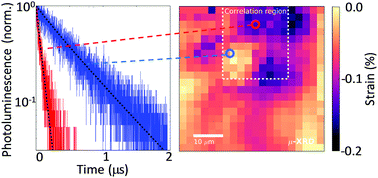
Energy Environ. Sci., 2019,12, 596-606
https://doi.org/10.1039/C8EE02751J
Probing buried recombination pathways in perovskite structures using 3D photoluminescence tomography
Perovskite solar cells and light-emission devices are yet to achieve their full potential owing in part to spatially heterogeneous non-radiative loss pathways that are both on, and buried beneath, the surfaces of films and crystals.
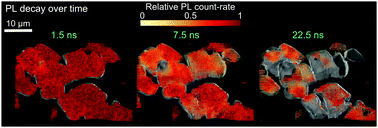
Energy Environ. Sci., 2018,11, 2846-2852
https://doi.org/10.1039/C8EE00928G
Enhanced visible light absorption in layered Cs3Bi2Br9 through mixed-valence Sn(II)/Sn(IV) doping
Mixed valence Sn doping of Cs3Bi2Br9 leads to broad visible light absorption.
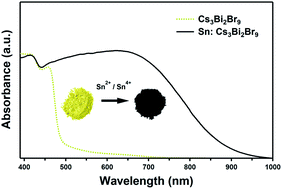
Chem. Sci., 2021,12, 14686-14699
https://doi.org/10.1039/D1SC03775G
Unraveling the antisolvent dripping delay effect on the Stranski–Krastanov growth of CH3NH3PbBr3 thin films: a facile route for preparing a textured morphology with improved optoelectronic properties
Controlled nucleation and growth by delaying the antisolvent dripping time leads to the formation of a textured perovskite thin film morphology with improved optoelectronic properties.
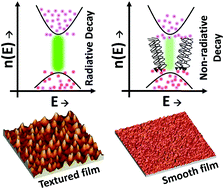
Phys. Chem. Chem. Phys., 2020,22, 26592-26604
https://doi.org/10.1039/D0CP05467D
Structural and spectroscopic studies of a nanostructured silicon–perovskite interface
This work investigates the formation of APbBr3 structures (A = CH3NH3+ (MA), Cs+) in silicon and oxidized silicon nanotubes (SiNTs) with varying inner diameter, as well as the role of the interface in perovskite spectroscopic properties.
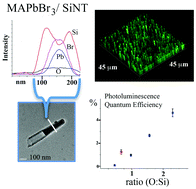
Nanoscale, 2020,12, 4498-4505
https://doi.org/10.1039/C9NR09622A
Molecular aggregation method for perovskite–fullerene bulk heterostructure solar cells
We report morphological control with phenyl-C60-butyric acid methyl ester (PCBM) molecular aggregation for perovskite–PCBM bulk heterostructure (Pe–PCBM BHS) solar cells.
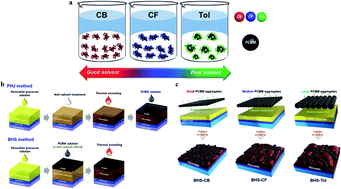
J. Mater. Chem. A, 2020,8, 1326-1334
https://doi.org/10.1039/C9TA11854C
About this collection
We are delighted to announce that Dr Samuel Stranks has been selected as the winner of the 2021 EES Lectureship. To celebrate, we have put together this collection of his publications in Royal Society of Chemistry journals.
This Lectureship recognises an outstanding emerging investigator working in an energy research topic within the scope of Energy & Environmental Science, providing a platform to showcase their research to the wider scientific community. The EES Lectureship is awarded annually through a process whereby nominations of candidates are invited from our fantastic community.
The winner receives a £1,000 honorarium and is given the opportunity to attend and present their research at a leading international conference. In the event this is not possible, for example due to travel restrictions, the presentation will be online. The recipient will also be invited to contribute a Review-type article to EES.
Sam Stranks is an Assistant Professor in Energy in the Department of Chemical Engineering and Biotechnology at the University of Cambridge. He leads a research group focusing on emerging semiconductors for low-cost electronics applications including solar cells, lighting, and detectors. He obtained his DPhil (PhD) from the University of Oxford as a Rhodes Scholar in 2012 and was a Marie Curie Fellow at MIT 2014-2016 before starting his group in Cambridge in 2017 as a Royal Society University Research Fellow. Sam is particularly renowned for his pioneering contributions to the field of halide perovskite optoelectronics, including understanding carrier recombination, complex structure-function relationships and device performance.
Sam received the 2018 Henry Moseley Award and Medal from the Institute of Physics, the 2019 Marlow Award from the Royal Society of Chemistry, the 2021 IEEE Stuart Wenham Award and the 2021 Philip Leverhulme Prize in Physics. He is also a co-founder of Swift Solar, a start-up developing lightweight perovskite PV panels, and the non-profit Sustain/Ed, developing climate-focused teaching modules for primary school children. He was listed by the MIT Technology Review as one of the 35 under 35 innovators in Europe.
Click here to find out more about the EES Lectureship